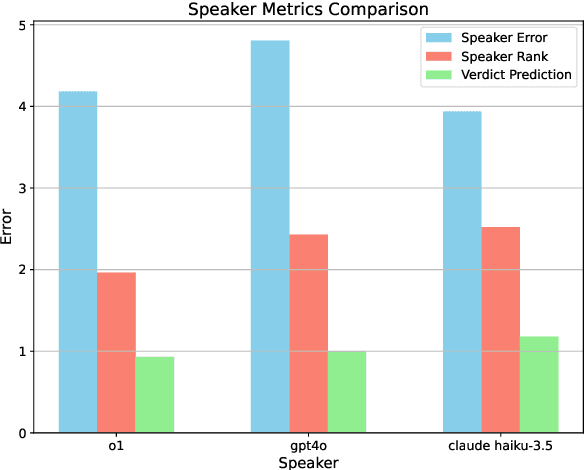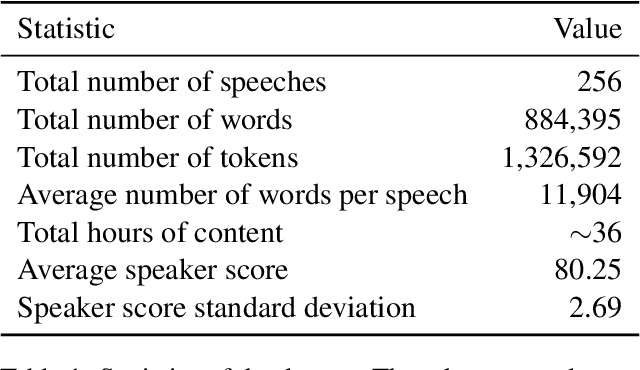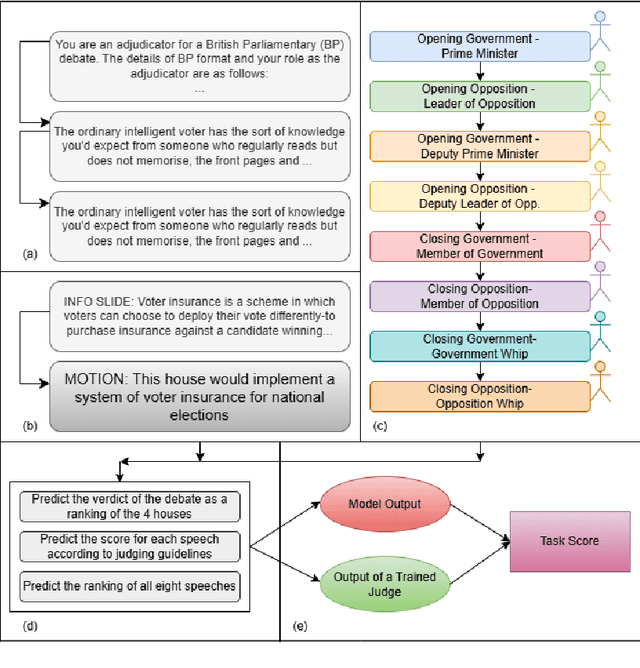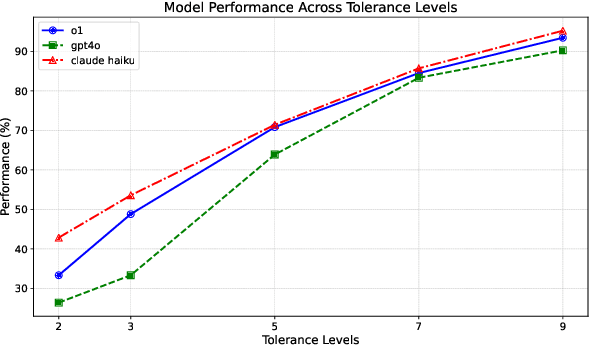Utkarsh Tiwari
DebateBench: A Challenging Long Context Reasoning Benchmark For Large Language Models
Feb 10, 2025



Abstract:We introduce DebateBench, a novel dataset consisting of an extensive collection of transcripts and metadata from some of the world's most prestigious competitive debates. The dataset consists of British Parliamentary debates from prestigious debating tournaments on diverse topics, annotated with detailed speech-level scores and house rankings sourced from official adjudication data. We curate 256 speeches across 32 debates with each debate being over 1 hour long with each input being an average of 32,000 tokens. Designed to capture long-context, large-scale reasoning tasks, DebateBench provides a benchmark for evaluating modern large language models (LLMs) on their ability to engage in argumentation, deliberation, and alignment with human experts. To do well on DebateBench, the LLMs must perform in-context learning to understand the rules and evaluation criteria of the debates, then analyze 8 seven minute long speeches and reason about the arguments presented by all speakers to give the final results. Our preliminary evaluation using GPT o1, GPT-4o, and Claude Haiku, shows that LLMs struggle to perform well on DebateBench, highlighting the need to develop more sophisticated techniques for improving their performance.
Emergent Stack Representations in Modeling Counter Languages Using Transformers
Feb 03, 2025Abstract:Transformer architectures are the backbone of most modern language models, but understanding the inner workings of these models still largely remains an open problem. One way that research in the past has tackled this problem is by isolating the learning capabilities of these architectures by training them over well-understood classes of formal languages. We extend this literature by analyzing models trained over counter languages, which can be modeled using counter variables. We train transformer models on 4 counter languages, and equivalently formulate these languages using stacks, whose depths can be understood as the counter values. We then probe their internal representations for stack depths at each input token to show that these models when trained as next token predictors learn stack-like representations. This brings us closer to understanding the algorithmic details of how transformers learn languages and helps in circuit discovery.
What Matters in Autonomous Driving Anomaly Detection: A Weakly Supervised Horizon
Aug 10, 2024Abstract:Video anomaly detection (VAD) in autonomous driving scenario is an important task, however it involves several challenges due to the ego-centric views and moving camera. Due to this, it remains largely under-explored. While recent developments in weakly-supervised VAD methods have shown remarkable progress in detecting critical real-world anomalies in static camera scenario, the development and validation of such methods are yet to be explored for moving camera VAD. This is mainly due to existing datasets like DoTA not following training pre-conditions of weakly-supervised learning. In this paper, we aim to promote weakly-supervised method development for autonomous driving VAD. We reorganize the DoTA dataset and aim to validate recent powerful weakly-supervised VAD methods on moving camera scenarios. Further, we provide a detailed analysis of what modifications on state-of-the-art methods can significantly improve the detection performance. Towards this, we propose a "feature transformation block" and through experimentation we show that our propositions can empower existing weakly-supervised VAD methods significantly in improving the VAD in autonomous driving. Our codes/dataset/demo will be released at github.com/ut21/WSAD-Driving
 Add to Chrome
Add to Chrome Add to Firefox
Add to Firefox Add to Edge
Add to Edge